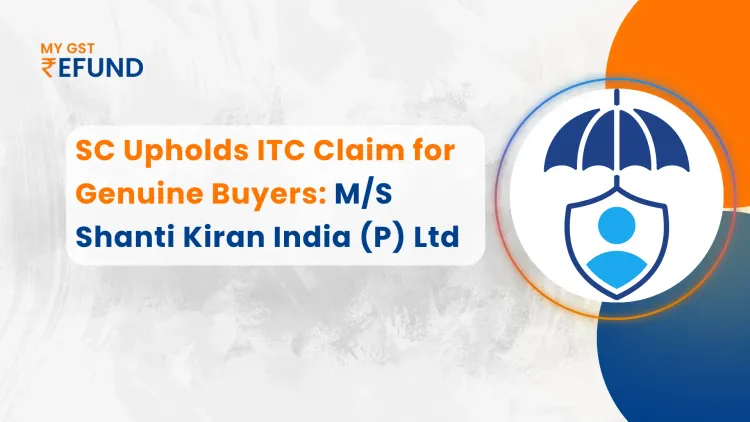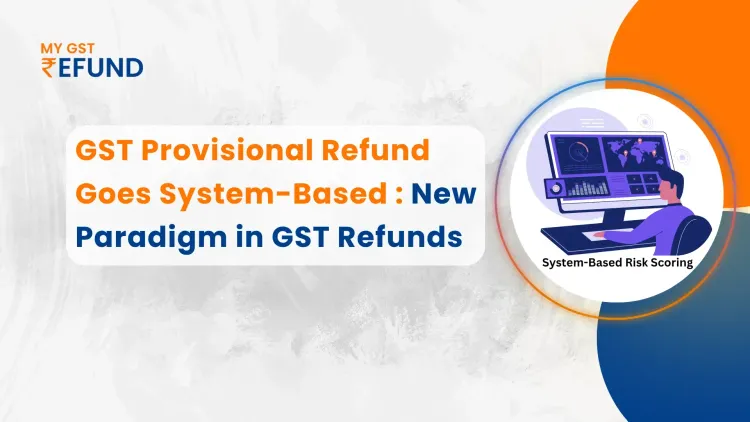Smart Credit & Automation for India’s Handicrafts: EPCH and MyGST Refund Session
The handicraft industry of India, besides being a guardian of India's cultural heritage, is also a potent driver of economic activity, especially in rural and Tier-2 locales, such as Moradabad and Saharanpur. The cities of Uttar Pradesh are renowned worldwide for their brassware and woodwork crafts, which are produced by artisans numbering in the thousands, including numerous individuals working in informal economies with no formal credit or online connectivity.
Recognizing these challenges and opportunities, the Export Promotion Council for Handicrafts (EPCH), in collaboration with fintech enabler MyGST Refund, organized a transformative seminar on June 21, 2025, in Moradabad, Uttar Pradesh. Titled “Empowering Handicrafts MSMEs: Access to Capital Through Smart Credit Solutions and GST Refund Using Technology,” the seminar aimed to digitally empower handicraft exporters by simplifying the process of accessing Input Tax Credit (ITC), refunds, and working capital through smart automation tools.
The session was led by Kapil Mahani and Bhumika Verma, co-founders of MyGST Refund, who introduced the attending exporters and artisans to a powerful new framework where GST compliance, smart credit, and automation converge to drive sustainable business growth.
India’s Handicraft Industry: Cultural Legacy, Economic Engine
The Indian handicrafts are a more than 4 billion dollar export juggernaut, which means that India is presenting itself in the shape of soft power on the international markets. According to EPCH, the sector supports over 7 million artisans, many of whom operate in unorganized clusters. Uttar Pradesh has continued to dominate in woodcraft and metal craft, with Moradabad and Saharanpur making a major contribution to exportation.
However, the industry is riddled with financial barriers:
- There is limited access to formal credit
- Delayed payment on exportation
- Lack of Digital Financial Practice
- Minimal integration with GST system
These challenges severely limit the ability of handicraft MSMEs to scale, access export opportunities, or build lasting financial resilience.
Rise of Tech-Driven Credit: Understanding Smart Credit
The concept of Smart Credit was introduced as a breakthrough solution to the credit bottlenecks faced by MSMEs. Smart Credit uses digital data such as GST returns, UPI transactions, and bank account analytics, to create a real-time creditworthiness profile for borrowers.
Key Components of Smart Credit:
- Automated Underwriting: No paperwork or manual evaluation
- AI-Based Credit Scoring: Risk is assessed using real-time financial behavior
- GST Data Integration: Timely ITC claims improve capital access
- Cash Flow Forecasting: Predicts repayment ability using transaction data
For artisans and exporters in cities like Saharanpur, smart credit removes the dependency on informal sources, bringing them into the financial mainstream.
MSME Automation: Driving Understanding, Speed, and Transparency (UST)
One of the key takeaways from the EPCH–MyGST Refund session was the response framework, like understanding, speed, and transparency, which acts as a vision for financial automation that meets the needs of grassroots artisans.
Digital Enabling Technologies for MSMEs:
Automated Refund Filing: Diverts time wastage and eliminates revenue discharge
Automation of Loan Applications: It can reduce the time to approve loans down to hours instead of weeks.
UPI/Bank API Integration: Developed real-time business finance profiles.
The effects of such tools can be observed within pilot cities already. Exporters in Saharanpur and Moradabad who previously waited months for GST refunds now track and receive them digitally in a fraction of the time.
Solving the Repayment Challenge Through Platform Intelligence
Artisans and handicrafts MSMEs remain restricted in their lending capacity by delayed repayments, especially in Tier-2 and rural markets. MyGST Refund addresses this issue by transforming the credit cycle into a data-driven feedback loop through its integrated “My Account” dashboard, which is a smart financial ecosystem tailored for MSMEs.
Important Attributes of the platform My Account:
Refund & Payment Tracking: Real-time updates on incoming GST refunds and upcoming payment obligations.
Installment Scheduling & Alerts: An automatic reminder that will ensure not have late payments and that late payments should not be incurred.
Predictive Cash Flow Analysis: Uses historical GST filings and banking data to forecast cash shortfalls.
Behavioral Nudges through AI: Individual hints suggesting savings, timely payments, and better finance-related behavior.
What makes this platform especially powerful is its ability to identify unclaimed Input Tax Credits (ITC). Some companies or businessmen might not even be aware that they can get refunds—funds that would offset other borrowings and stabilize the cash flow. MyGST Refund not only highlights these hidden credits but also assists exporters in claiming them efficiently.
India’s Trade Future: Leveraging FTA 2050 and Soft Power Exports
India is targeting a significant expansion in global trade by 2050, with Free Trade Agreements (FTAs) acting as catalysts. Handicrafts have a unique advantage since they are culturally positive and exportable.
Handicrafts as Soft Power:
- They serve as a unique Indian identity and heritage
- The world is increasing demand for sustainable, handmade, and ethical products.
- Indian craftsmanship enjoys duty-free access under several FTAs.
With India negotiating more bilateral FTAs, particularly with the EU and Gulf nations, handicrafts can emerge as soft power exports that represent Indian culture while also driving foreign income.
Platforms like MyGST Refund align perfectly with this vision, helping local craftspeople become global exporters, powered by smart credit and compliance tools.
The Vision of MyGST Refund: Where Handicraft Meets Fintech
At its core, MyGST Refund is more than a refund tool—it is a digital finance ecosystem tailored for artisans and MSME exporters.
"My Account" Ecosystem Offers:
- GST refund tracking & automation
- Instant credit assessment using ITC
- Scheme of loan disbursement and repayment
- Tax-based cash flow planning.
- Cash flow planning based on tax data
This is aimed at creating financial discipline through the digitization of informal business operations. The platform is mobile-first and multilingual and thus achieves last-mile coverage in even the remote belts.
By working with EPCH and local industry clusters, MyGST Refund is helping artisans:
- Formalize operations
- Make online identities
- Increase the right to receive government schemes
Seminar Highlights and Stakeholder Participation:
The June 21 seminar was held under the leadership of EPCH Director Rakesh Kumar, with special addresses by Kapil Mahani (Co-Founder, MyGST Refund) and Bhumika Verma (CRO, MyGST Refund).The session was also supported by key stakeholders, including
Shri Vinod Kumar, MD, National Small Industries Corporation (NSIC)
Smt. Rachna Shah, Export Commissioner, Ministry of Textiles
EPCH Regional Officers and Local Trade AssociationsArtisans in attendance appreciated the live demonstration of the MyGST Refund platform and the simplified refund claim walkthrough with their resource tool refund calculator. Real-time Q&As gave MSMEs a chance to clear up the issue of ITC mismatches, tracking of invoices, and loan eligibility.
Tradition Meets Innovation at India’s Financial Crossroads
The seminar conducted by EPCH and MyGST Refund in Moradabad was not just a policy discussion -it was a real-time demonstration of how technology can resolve the historic pain points of India’s handicraft sector.
Findings & Recommendations
- Smart Credit, powered by GST data and automation, is unlocking credit access for MSMEs
- MyGST Refund’s platform reduces processing time, increases transparency, and builds trust
- Behavioral nudges and AI tools help ensure timely repayment and financial discipline
- Digital readiness will be essential for artisan clusters to leverage upcoming FTAs
Formalization through tech is key to creating export-ready rural economies
Conclusion
The way ahead should be one of these ambitious plans of India to tap into its $10 billion handicraft export potential by 2030.
Policy Support: Streamlined GST regulations and ITC awareness, and FTA harmonization
Public-Private Partnerships: Among EPCs, fintechs, NBFCs, and state governments
Platform-First Approach: Scalable, mobile-first, and multilingual tools available on MyGST Refund, like the GST Refund Calculator, which is India’s first automated GST refund platform.
The whole world will not only retain its cultures but also drive the engine of growth in the cultural regions of the world, thanks to the combination of both tradition and innovations applied by the Indian artisans.
Sources: https://www.epch.in/sites/default/files/craftcil/202506/files/basic-html/page18.html
Related Posts







